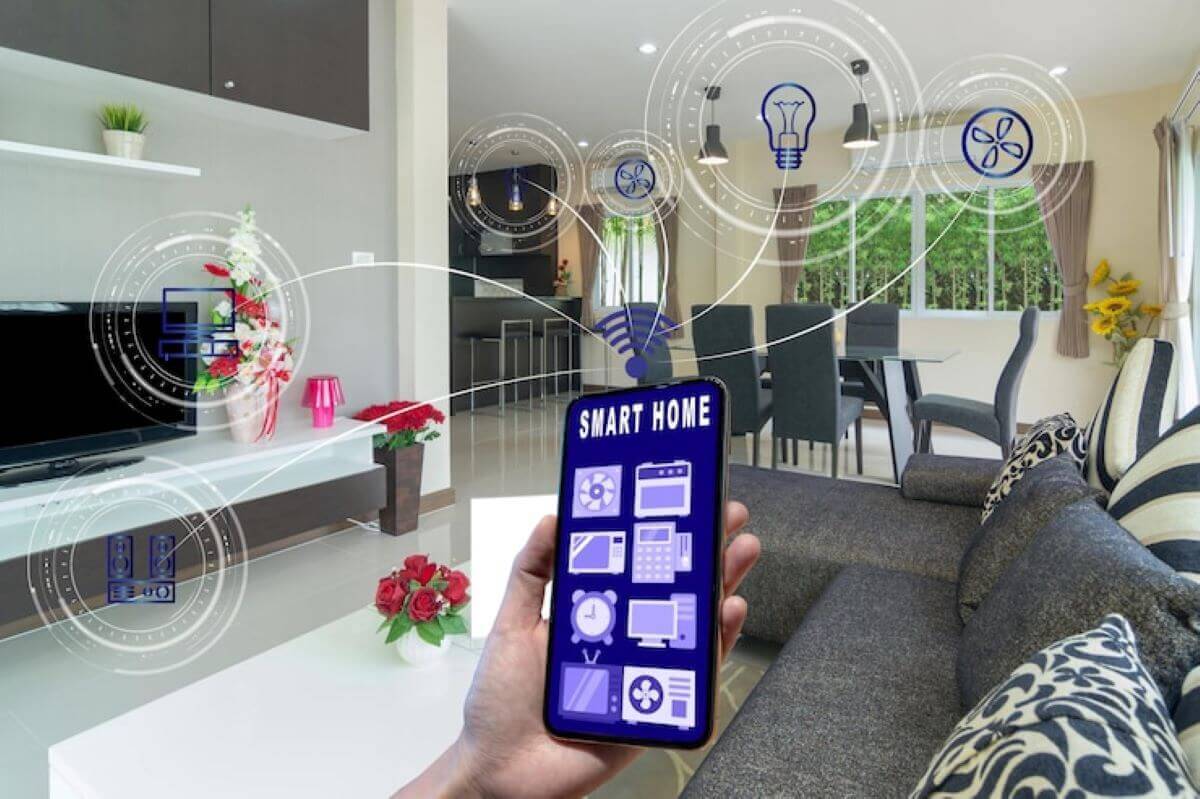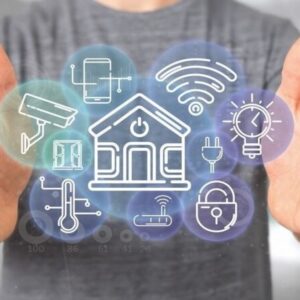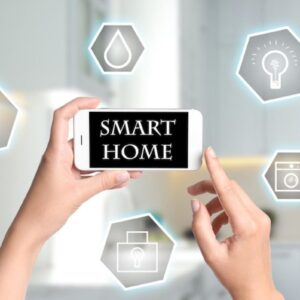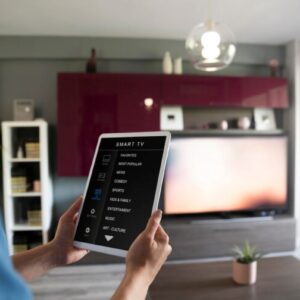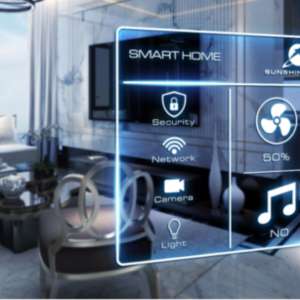Introduction
What are smart homes? The concept of smart homes has undergone a remarkable evolution, transforming traditional houses into intelligent, interconnected living spaces. Smart home technology, integrating advanced devices and systems, enhances our lives. From automated lighting to intelligent security systems, the possibilities are expansive, reshaping our homes into sophisticated hubs of efficiency and convenience. The world of smart homes is a dwelling equipped with technology that enables residents to control and automate various aspects remotely. This includes managing lighting, temperature, security, and entertainment systems through connected devices such as smartphones or voice-activated assistants. The goal is to create an environment that responds intelligently to the needs and preferences of its occupants, offering a seamless and personalized living experience. Smart&home technology is at the forefront of this transformative trend.
What Is a Smart Home?
Understanding the Core Principles
At their core, smart homes operate on the principles of automation and connectivity, epitomizing the essence of what is a smart home. It utilizes sensors, actuators, and communication technologies to gather information and execute tasks without direct human intervention. The synergy between these components enables a level of control and customization that traditional homes cannot match, ultimately providing residents with unparalleled comfort and efficiency.
Exploring Home Automation Technology
What are smart homes? Automation technology encompasses a wide array of devices and systems designed to enhance various facets of daily life. From smart thermostats that optimize energy consumption to intelligent doorbell cameras that enhance security, technology continues to evolve rapidly. Homeowners can now tailor their living spaces to align with personal preferences, all while enjoying the convenience of remote management. In the realm of home automation, what is a smart home exactly refers to a residence equipped with these advanced technologies for seamless integration and enhanced efficiency.
Smart Home Technology Features
The Landscape of Connected Home Devices
Connected home devices form the backbone of smart home technology, offering a diverse range of functionalities. Just begin with smart thermostats, lighting systems, and security cameras. Today, homeowners can seamlessly integrate smart refrigerators, door locks, and even appliances like coffee makers into a unified ecosystem. This interconnectedness fosters a holistic and responsive living environment in smart&home.
Delving into IoT in Home Automation
What are smart homes? The Internet of Things (IoT) plays a pivotal role in the evolution of the World of Smart Homes. IoT in home automation involves connecting devices to the internet, enabling them to collect and exchange data. This interconnected web allows residents to control and monitor their homes remotely, paving the way for innovative solutions like predictive maintenance, energy optimization, and personalized user experiences.
Benefits of Smart Homes
Enhancing Daily Living through Automation
One of the primary benefits of smart homes is the enhancement of daily living. Automation simplifies routine tasks, such as adjusting thermostat settings, turning off lights, or managing home security. This not only saves time but also creates a more comfortable and enjoyable living environment. Smart homes adapt to occupants’ preferences, learning from their habits and making adjustments accordingly.
Improving Efficiency and Convenience
Efficiency and convenience are at the forefront of the advantages offered by the World of smart homes. Automated systems optimize energy consumption, leading to cost savings and a reduced environmental impact. Convenience is heightened through voice-activated assistants, allowing residents to control various aspects of their homes effortlessly. Whether it’s preparing the home for arrival or ensuring security while away, smart homes streamline processes for an enhanced lifestyle in smart&home.
Smart Home Automation Systems
Navigating the Variety of Systems Available
The World of Smart Homes automation systems is diverse, catering to different needs and preferences. Homeowners can choose from centralized systems that control multiple devices through a single platform or opt for decentralized setups where individual devices communicate directly. Common systems include Apple’s HomeKit, Amazon’s Alexa, Google Home, and various proprietary systems developed by smart home device manufacturers. Navigating this variety allows residents to tailor their smart homes to align seamlessly with their lifestyles.
Integrating Smart Home Features
Integrating smart home features involves connecting various devices and systems to work harmoniously. This integration is crucial for creating a cohesive and efficient smart home environment. For example, a smart thermostat can communicate with smart lighting systems to optimize energy usage based on occupancy patterns. Such integrations showcase the synergy between different components, enhancing the overall functionality and user experience.
Internet of Things (IoT) in Home Solutions
Connecting Devices for Seamless Living
The Internet of Things (IoT) has revolutionized how devices communicate and collaborate within a smart home. IoT in-home solutions involve connecting devices to the internet, allowing them to share data and respond intelligently to user preferences. From smart refrigerators that create shopping lists to security cameras that send real-time alerts, the seamless connectivity facilitated by IoT transforms a collection of devices into a unified and responsive ecosystem.
Future Innovations in Home Automation
As technology continues to advance, the future holds exciting innovations in home automation. Predictive analytics, machine learning, and artificial intelligence are poised to play increasingly significant roles in smart homes. Anticipated advancements include even more intuitive user interfaces, enhanced energy efficiency, and the integration of emerging technologies like augmented reality. The ongoing evolution of IoT promises a future where smart homes become even more adaptive and intelligent.
Voice-Controlled Home Systems
The Rise of Voice-Activated Technology
Voice-controlled home systems have become a hallmark of the modern World of Smart Homes. With the advent of voice-activated assistants like Amazon’s Alexa, Apple’s Siri, and Google Assistant, residents can interact with and control their smart homes using natural language commands. This hands-free approach not only adds an extra layer of convenience but also contributes to the accessibility of smart home features, allowing users to manage devices effortlessly.
Integrating Voice Commands for Home Automation
Integrating voice commands into home automation systems enables residents to perform a myriad of tasks with a simple verbal directive. From adjusting thermostat settings and playing music to controlling smart lighting and querying information, voice-controlled systems streamline interactions. This seamless integration of voice commands enhances the overall user experience, making smart homes more intuitive and user-friendly.
Home Security in Smart Homes
Strengthening Security Measures through Automation
Home security stands as a prominent aspect of smart homes, with automated systems providing advanced measures to safeguard residences. Smart security cameras, doorbell cameras, and motion sensors offer real-time monitoring and alert residents to potential threats. Automated door locks and window sensors enhance security further by allowing remote control and monitoring. These features collectively contribute to a comprehensive and responsive home security ecosystem.
The Role of Smart Devices in Home Protection
Smart devices play a crucial role in enhancing home protection. Doorbell cameras with two-way communication allow residents to interact with visitors remotely, deterring potential intruders. Motion sensors trigger alerts and activate cameras, providing a proactive approach to security. Automated door locks add an extra layer of protection by allowing residents to control access to their homes from anywhere. The integration of these smart devices fortifies security, offering peace of mind to homeowners.
Energy-Efficient Smart Homes
Implementing Automation for Energy Conservation
Energy efficiency is a key aspect of modern living, and smart homes excel in implementing automation for energy conservation. Smart thermostats learn occupants’ preferences and adjust temperature settings accordingly, optimizing energy usage. Intelligent lighting systems automatically adjust brightness based on natural light conditions and occupancy, reducing unnecessary energy consumption. These automated features not only contribute to environmental sustainability but also result in cost savings for homeowners.
Sustainable Practices in Smart Home Living
The World of Smart Homes, through their emphasis on energy efficiency and automation, promotes sustainable living practices. Residents can actively monitor and manage their energy usage, identifying areas for improvement through smart analytics. This heightened awareness empowers homeowners to make informed decisions that align with their environmental values. By incorporating sustainable practices into daily routines, smart homes contribute to a greener and more eco-conscious way of living.
The Future of Home Automation
Anticipating Innovations and Trends
Future home automation promises to be exciting as technology advances. Predictive analytics and machine learning will enable systems to anticipate user preferences and automate actions seamlessly. Integration with emerging technologies, such as augmented reality for enhanced user interfaces, promises a more immersive and interactive smart home experience. The continuous refinement of existing technologies and the introduction of novel solutions will shape the future landscape of home automation.
The Continued Evolution of Smart Living
The journey towards smart living is an ongoing evolution. The integration of cutting-edge technologies, coupled with a growing emphasis on user-centric design, will redefine the way we interact with our living spaces. From augmented reality-enhanced interfaces to innovations in energy storage, the continued evolution of smart living promises a future where homes are not just intelligent but also adaptive, providing residents with unparalleled comfort and efficiency.
Conclusion
In conclusion, the realm of smart homes represents a transformative wave of technological innovation, redefining the way we inhabit and interact with our living spaces. From the seamless integration of IoT to the convenience of voice-activated assistants and the fortification of security measures, smart homes epitomize the intersection of comfort, efficiency, and sustainability. As the future unfolds, the trajectory of home automation promises even greater advancements, solidifying smart living as a dynamic and integral part of our modern lifestyles.
Frequently Asked Questions(FAQ’s)
Q: How do smart homes enhance daily living?
A: Smart homes enhance daily living through automation, offering convenience, efficiency, and personalized experiences.
Q: What are the primary benefits of smart home technology?
A: Smart home technology offers benefits such as improved efficiency, enhanced security, energy conservation, and seamless integration.
Q: How does IoT contribute to smart home solutions?
A: IoT connects devices for seamless living, enabling data exchange and intelligent responses within the smart home ecosystem.
Q: What role does voice control play in smart homes?
A: Voice control is integral, allowing residents to interact with and control various smart home features using natural language commands.
Q: How can smart homes contribute to energy conservation?
A: Smart homes implement automation for energy conservation through features like smart thermostats and intelligent lighting systems.

